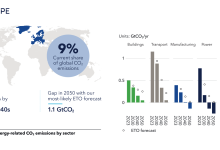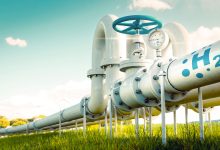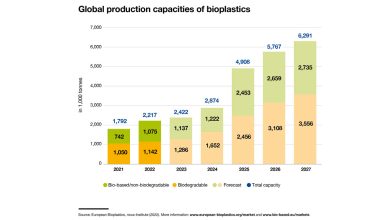Pollution in EU wreaking havoc on human health
19 million Romanians have lost 292.000 years of life
Despite constant improvement over the past few years, air pollution continues to exceed the limits imposed by the European Union (EU) and the World Health Organization, according to the last report of the European Environment Agency (EEA) – ‘Air quality in Europe – 2018’. Romania is no exception, the life of Romanians being shortened by around 292.300 years due to pollution in 2015, according to the mentioned document.
Road transport, agriculture, energy production, industry and households contribute to the greatest extent to air pollution. In mid-May, six countries were referred by the European Commission to the EU Court of Justice for failure to fulfil their obligations in terms of air quality. Together with France, Germany, the UK, Italy and Hungary is also Romania. Particulate matter (PM) and nitrogen dioxide (NO2 emitted by diesel engines) and ground-level ozone (O3) seriously affects human life, in conditions in which the 2,500 air quality monitoring stations in Europe have revealed the existence of high concentration of such compounds. Air pollution also has a considerable economic impact, leading to a shorter living time, increased medical costs and reduced productivity across the economy by working days lost due to health issues.
Limits imposed for PM exceeded almost everywhere
Concentrations of atmospheric particulate matter (PM) continued to exceed the limit values imposed by the EU and the World Health Organization, which are stricter, in many areas of Europe in 2016. For PM with a diameter of 10 μm or less (PM10, PM2.5), concentrations above the daily limit value imposed by the EU were recorded by 19% of the monitoring stations in the 28 EU Member States and in other European states outside the Community space, but which make such measurements. Thus, for PM2.5, concentrations exceeding the annual limit value were recorded at 5% of the reporting stations in four EU Member States and other four reporting states. Limits imposed by WHO for PM10 were exceeded in almost all countries, with the exception of Estonia, Island, Ireland and Switzerland. As regards WHO limits for PM2.5, they were exceeded in most states, the exceptions being Estonia, Finland, Hungary, Norway and Switzerland. No less than 13% of the urban population of EU-28 was exposed to PM10 levels above the daily limit value and approximately 42% was exposed to concentrations exceeding WHO limits for PM10 in 2016. As regards PM2.5, 6% of the urban population of EU-28 was exposed to levels above EU limit, and approximately 74% was exposed to concentrations exceeding WHO value for PM2.5 in 2016. However, the report mentions that the percentage of population of EU-28 in cities exposed to concentrations of PM10 above the limit values and WHO guidelines in 2016 was the lowest (since 2000), and for PM2.5 since 2006, noticing a downward trend.
Hundreds of thousands of deaths affect Europe
The estimates updated in the report indicate the fact that in 2015 concentrations of atmospheric particulate matter (PM2.5) were responsible for approximately 422,000 premature deaths in 41 European countries, of which approximately 391,000 were in the 28 EU Member States. A wider assessment included in this year’s report shows that since 1990 premature deaths due to PM2.5 have been reduced by about half a million per year. “Air pollution is an invisible killer and we need to step up our efforts to address the causes. As far as air pollution is concerned, emissions from road transport are often more harmful than those from other sources, as they occur at ground level and tend to occur in cities, near people. That is why it is so important for Europe to double its efforts to reduce emissions from transport, energy and agriculture and invest in making them cleaner and more sustainable, says Hans Bruyninckx, EEA Executive Director.
Mortality and morbidity associated with pollution
The effects of these exposures at concentrations exceeding permitted levels are increased mortality and morbidity, and on the other hand they lead to degradation of air and water quality and therefore affect the health of ecosystems and climate change. At the level of 2016, for the member countries of the Organization for Economic Cooperation and Development (OECD), direct costs generated by pollution of USD 1,280 (approximately EUR 1,100) per capita were estimated for 2015 and USD 2,880-2,950 (approximately EUR 2,480-2,540) per capita for 2060. Also, in the area of OECD member states, indirect costs generated by air pollution amounted to USD 1,200 (approximately EUR 1,030) per capita in 2015 and it is estimated that they will increase to USD 2,610-2,680 (approximately EUR 2,250-2,310) per capita in 2060.
PM2.5 – Atmospheric particulate matter
The percentage of urban population in EU-28 exposed to PM2.5 was 6% in 2016, decreasing from 7% in the previous year. However, approximately 74% of EU’s urban population was exposed to concentrations exceeding the stricter guidelines of WHO. Exposure to PM2.5 has caused the premature death of an estimated number of 422,000 persons in 41 countries in 2015.
NO2 – Nitrogen dioxide
The annual limit value for NO2 continues to be exceeded throughout Europe. In 2016, 7% of the urban population of EU-28 lived in areas with higher concentrations than the annual limit value of the EU and WHO guidelines. However, the percentage decreased from 9% in 2015. Exposure to NO2 has caused the premature death of an estimated number of 79,000 persons in 41 countries in 2015. The annual limit value for nitrogen dioxide (NO2) continues to be exceeded throughout Europe, even if the concentration and exposure are falling. In 2016, approximately 12% of all reporting stations recorded values above the limits accepted by WHO.
O3 – Ground level ozone
Around 12% of the urban population of EU-28 was exposed to O3 levels above the target value of EU in 2016, which represents a considerable decrease compared to 2015 (30%). However, the percentage is still very high, given that in 2014 the percentage of population exposed was 7%. Approximately 98% of the population was exposed to levels exceeding WHO limits. Exposure to ozone has caused the premature death of an estimated number of 17,700 persons in 41 countries in 2015. In 2016, 17% of the measurement stations in the EU recorded concentrations above the ozone (O3) values considered harmful to human health.
SO2 – Sulphur dioxide
Exposure to concentrations above the admitted limit of SO2 (sulphur dioxide) has decreased in the recent years. 23 monitoring stations reported in 2016 for SO2 an overrun of values accepted by the EU. In turn, a much higher number of stations reported an overrun of the much stricter values imposed by WHO, which has determined 23% of the urban population of the EU to be exposed in 2016 to much higher concentration than the limit value accepted.
Lower risks
- Population exposure to CO (carbon monoxide) concentrations above the EU value is limited and rare;
- Exposure to C6H6 concentrations (benzene) is limited to a few areas where there is intense traffic or industrial platforms;
- Exposure to high concentrations of As (arsenic), Cd (cadmium), Pb (lead) and Ni (nickel) is limited to some areas in Europe and is usually caused by certain industrial or energy centers.
Perspectives and conclusions
In Europe, the emissions of many atmospheric pollutants have fallen substantially in recent decades, leading to an improvement in air quality in the region. However, concentrations of atmospheric pollutants continue to be very high, and air quality problems persist. A significant proportion of Europe’s population lives in areas, particularly cities, where overruns of air quality standards occur: ozone, nitrogen dioxide and particulate matter (PM) pollution pose serious health risks. Several countries currently exceed one or more emission limits for four major air pollutants. Consequently, the reduction of air pollution remains an especially important target.
The EU’s long-term objective is to achieve levels of air quality that do not affect or induce unacceptable risks to human health and the environment. The EU acts on several levels to reduce exposure to air pollution: through legislation; through cooperation with the sectors responsible for air pollution, as well as with international, national and regional authorities, non-governmental organizations and through research. EU policies aim to reduce exposure to air pollution by reducing emissions and by setting limits and target values for air quality. At the end of 2013, the European Commission adopted the Air Quality Package, which includes new measures to reduce air pollution.
In the Communication entitled ‘A Europe that protects: Clean air for all’, adopted in May 2018, the European Commission presents the measures available to help Member States combat air pollution. The Commission also highlights the need to step up cooperation with Member States by working with relevant authorities in new clean air dialogues and by using EU funds to support measures to improve air quality.
Measures to combat air pollution
The measures proposed by the Commission are based on three main pillars: air quality standards; national targets for reducing greenhouse gas emissions and emission standards for the main sources of pollution, e.g. from ships and vehicles, to the energy sector and industry.
In order to address the emissions of air pollutants from road traffic, the Commission will continue to strengthen its cooperation with national, regional and local authorities on a common integrated approach to urban vehicle access regulations in the EU Urban Agenda.
In addition, the Commission has conducted a comprehensive reform to ensure that emissions of air pollutants from vehicles are measured under real driving conditions.
Read the full report here: https://www.eea.europa.eu/publications/air-quality-in-europe-2018







